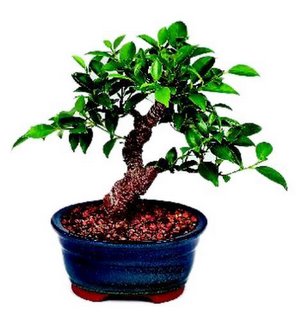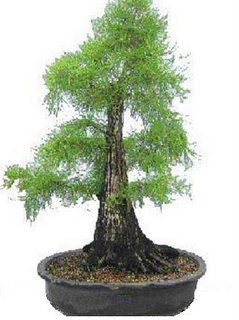LANDSCAPE GARDENING.
Landscape gardening has often been likened to the painting of a picture. Your art-work teacher has most likely told you that a good picture should have a point of chief interest, and the rest of the points simply go to make more beautiful the central idea, or to form a fine setting for it. So in landscape gardening there must be in the gardener’s mind a picture of what he desires the whole to be when he completes his work.
From this study we shall be able to work out a little theory of landscape gardening.
Let us go to the lawn.
A good extent of open lawn space is always beautiful. It is restful. It adds a feeling of space to even small grounds. So we might generalize and say that it is well to keep open lawn spaces. If one covers his lawn space with many trees, with little flower beds here and there, the general effect is choppy and fussy. It is a bit like an over-dressed person. One’s grounds lose all individuality thus treated.
A single tree or a small group is not a bad arrangement on the lawn. Do not centre the tree or trees. Let them drop a bit into the background. Make a pleasing side feature of them. In choosing trees one must keep in mind a number of things. You should not choose an overpowering tree; the tree should be one of good shape, with something interesting about its bark, leaves, flowers or fruit. While the poplar is a rapid grower, it sheds its leaves early and so is left standing, bare and ugly, before the fall is old.
Mind you, there are places where a row or double row of Lombardy poplars is very effective. But I think you’ll agree with me that one lone poplar is not. The catalpa is quite lovely by itself. Its leaves are broad, its flowers attractive, the seed pods which cling to the tree until away into the winter, add a bit of picture squeness. The bright berries of the ash, the brilliant foliage of the sugar maple, the blossoms of the tulip tree, the bark of the white birch, and the leaves of the copper beech all these are beauty points to consider.
Place makes a difference in the selection of a tree. Suppose the lower portion of the grounds is a bit low and moist, then the spot is ideal for a willow. Don’t group trees together which look awkward. A long-looking poplar does not go with a nice rather rounded little tulip tree. A juniper, so neat and prim, would look silly beside a spreading chestnut. One must keep proportion and suitability in mind.
I’d never advise the planting of a group of evergreens close to a house, and in the front yard. The effect is very gloomy indeed. Houses thus surrounded are overcapped by such trees and are not only gloomy to live in, but truly unhealthful. The chief requisite inside a house is sunlight and plenty of it.
As trees are chosen because of certain good points, so shrubs should be. In a clump I should wish some which bloomed early, some which bloomed late, some for the beauty of their fall foliage, some for the colour of their bark and others for the fruit. Some spireas and the forsythia bloom early. The red bark of the dogwood makes a bit of colour all winter, and the red berries of the barberry cling to the shrub well into the winter.
Certain shrubs are good to use for hedge purposes. A hedge is rather prettier usually than a fence. The Californian privet is excellent for this purpose. Osage orange, Japan barberry, buckthorn, Japan quince, and Van Houtte’s spirea are other shrubs which make good hedges.
I forgot to say that in tree and shrub selection it is usually better to choose those of the locality one lives in. Unusual and foreign plants do less well, and often harmonize but poorly with their new setting.
Landscape gardening may follow along very formal lines or along informal lines. The first would have straight paths, straight rows in stiff beds, everything, as the name tells, perfectly formal. The other method is, of course, the exact opposite. There are danger points in each.
The formal arrangement is likely to look too stiff; the informal, too fussy, too wiggly. As far as paths go, keep this in mind, that a path should always lead somewhere. That is its business to direct one to a definite place. Now, straight, even paths are not unpleasing if the effect is to be that of a formal garden. The danger in the curved path is an abrupt curve, a whirligig effect. It is far better for you to stick to straight paths unless you can make a really beautiful curve. No one can tell you how to do this.
Garden paths may be of gravel, of dirt, or of grass. One sees grass paths in some very lovely gardens. I doubt, however, if they would serve as well in your small gardens. Your garden areas are so limited that they should be re-spaded each season, and the grass paths are a great bother in this work. Of course, a gravel path makes a fine appearance, but again you may not have gravel at your command.
It is possible for any of you to dig out the path for two feet. Then put in six inches of stone or clinker. Over this, pack in the dirt, rounding it slightly toward the centre of the path. There should never be depressions through the central part of paths, since these form convenient places for water to stand. The under layer of stone makes a natural drainage system.
A building often needs the help of vines or flowers or both to tie it to the grounds in such a way as to form a harmonious whole. Vines lend themselves well to this work. It is better to plant a perennial vine, and so let it form a permanent part of your landscape scheme. The Virginia creeper, wistaria, honeysuckle, a climbing rose, the clematis and trumpet vine are all most satisfactory.
Close your eyes and picture a house of natural colour, that mellow gray of the weathered shingles. Now add to this old house a purple wistaria. Can you see the beauty of it? I shall not forget soon a rather ugly corner of my childhood home, where the dining room and kitchen met. Just there climbing over, and falling over a trellis was a trumpet vine. It made beautiful an awkward angle, an ugly bit of carpenter work.
Of course, the morning-glory is an annual vine, as is the moon-vine and wild cucumber. Now, these have their special function. For often, it is necessary to cover an ugly thing for just a time, until the better things and better times come. The annual is ‘the chap’ for this work.
Along an old fence a hop vine is a thing of beauty. One might try to rival the woods’ landscape work. For often one sees festooned from one rotted tree to another the ampelopsis vine.
Flowers may well go along the side of the building, or bordering a walk. In general, though, keep the front lawn space open and unbroken by beds. What lovelier in early spring than a bed of daffodils close to the house? Hyacinths and tulips, too, form a blaze of glory. These are little or no bother, and start the spring aright. One may make of some bulbs an exception to the rule of unbroken front lawn.
Snowdrops and crocuses planted through the lawn are beautiful. They do not disturb the general effect, but just blend with the whole. One expert bulb gardener says to take a basketful of bulbs in the fall, walk about your grounds, and just drop bulbs out here and there. Wherever the bulbs drop, plant them. Such small bulbs as those we plant in lawns should be in groups of four to six. Daffodils may be thus planted, too.
The place for a flower garden is generally at the side or rear of the house. The backyard garden is a lovely idea, is it not? Who wishes to leave a beautiful looking front yard, turn the corner of a house, and find a dump heap? Not I. The flower garden may be laid out formally in neat little beds, or it may be more of a careless, hit-or-miss sort. Both have their good points. Great masses of bloom are attractive.
You should have in mind some notion of the blending of colour. Nature appears not to consider this at all, and still gets wondrous effects. This is because of the tremendous amount of her perfect background of green, and the limitlessness of her space, while we are confined at the best to relatively small areas. So we should endeavour not to blind people’s eyes with clashes of colours which do not at close range blend well. In order to break up extremes of colours you can always use masses of white flowers, or something like mignonette, which is in effect green.
Finally, let us sum up our landscape lesson. The grounds are a setting for the house or buildings. Open, free lawn spaces, a tree or a proper group well placed, flowers which do not clutter up the front yard, groups of shrubbery these are points to be remembered. The paths should lead somewhere, and be either straight or well curved. If one starts with a formal garden, one should not mix the informal with it before the work is done.
If you would like a little help with the whole process then there are a couple of fine books that I highly recommend that you read and study. Now you will not be able to carry these books very easy to the garden but they are both very good and especially the one about garden plants from A to Z.
So check these out today and if you want or need more then there are others that I can recommend.
Thanks for reading: BY Harold Yearout




